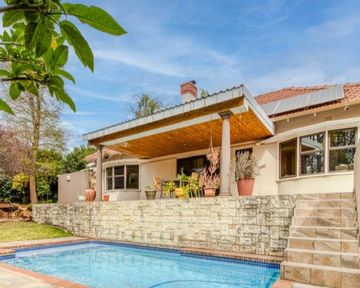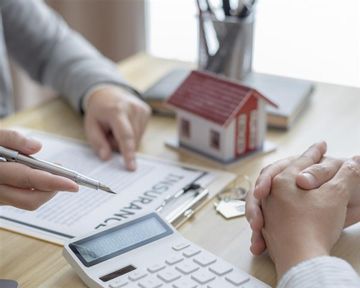10 Tips to get your house ready to sell
It takes just 15 seconds for a would-be buyer to like a property - so that all-important first impression in a highly competitive market is now more important than ever, says Tyson Properties CEO, Nick Pearson.
For him, a little goes a long way and updating decor, particularly in key rooms such as kitchens and bathrooms, is a small price to pay for a quick sale at the right price.
There are no formal South African figures, but global statistics reveal that investing in staging a home makes a big difference. According to a recent survey from the International Association of Home Staging Professionals, staging helps sell homes three to 30 times faster. It can help increase the sale price by up to 20% on average. With an average investment of 1% of the sale price into staging, about 75% of sellers saw an ROI of 5% to 15% over asking price, according to data from the Real Estate Staging Association (RESA).
First, there’s good old common sense - remove, replace, or repair the things that would put off any potential buyer before adding those special touches that will make your home the best version of itself.
“We are not all interior designers – and, if you don’t have ‘an eye’ of a close friend who is good at this, you can consult an interior designer at a very reasonable hourly consulting rate. Something as seemingly unimportant as re-arranging some furniture can make the world of difference,” he explains.
We asked top interior designers and Tyson Properties agents for some tips on making sure that your home is in tip-top condition. These are their top 10 suggestions:
Declutter and simplify
Apart from making a home look uncared for and untidy, too much stuff can also make rooms seems smaller and …. So, remove all the usual family detritus – toys, clothing and shoes as well as dishes and appliances from sinks and worktops and toiletries, toothbrushes and razors from bathrooms. Storage space is important to sellers and items lying around suggest there isn’t enough. Also, it is not good enough to just open up cupboards and shove everything inside – buyers tend to open cupboards, so keep them tidy.
Potential buyers should also be able to move around your rooms - and from room to room - freely, so make sure that your furniture is not creating an obstacle course! Less is always more and, if you have some items that can be removed to make spaces look more open and accessible, put them into storage.
Depersonalize your space
Staging isn’t about selling yourself but about exhibiting the best features of your home so that potential buyers can imagine their families there. So, remove personal items – from family photographs, to trophy collections or potentially controversial art – to neutralise the space.
Paint
A good paint job makes a home look well-kept and loved and can even add to the price. Identify any cracks, chips or marks on walls and, if you can’t match the paint to disguise them, simply give that exterior wall or room a new lick of colour. If you have borehole water that has stained walls, clean them and paint them. Painting tired kitchen cupboards (and even your older furniture) can also provide an instant update. Don’t forget that your front door is the ‘statement’ entry way. Make sure that it looks bright and welcoming – depending on the colour and style of your home, consider painting it using a statement contrasting colour. Consult Pintrest and other décor websites and magazines for the latest trends.
Colour conscious
Remember that colour is another very personal choice. Bright or dark walls can put off many buyers and can even make rooms seems smaller or darker, so go for a neutral colour palette. When choosing an exterior colour, look at what works in the neighbourhood or check to make sure that your colour choice fits with the rules of an estate.
Make a snag list
Attention to basic maintenance is a must. Put yourself in the shoes of potential buyers and do an inspection of your home end to end (including the garden and outbuildings). Fix cracks, repair any leaks (especially dripping taps), change any globes and tighten door and cupboard handles and hinges. Tidy away any cables and, where possible, hide any wiring in ceilings or conduits. Make sure drains are clear of debris and covered and that you have no pipes snagging across the lawn.
The most obvious items that might need to be swapped out are dated or damaged light fittings and warped ceiling fans, faucets and mixers in kitchens and bathrooms, switch covers, door knobs, and drawer pulls. Don’t compromise on safety – replace cracked window panes and make sure that stair rails are rust-free and well anchored.
Keep it crisp, clean, and comfy
While quirky personal items do need to be stowed out of sight, your house still needs to feel homely and welcoming. The first rule of thumb is, keep it clean. That means no grubby surfaces, dusty shelves, blinds, or fans. Ensure that baths and showers are clean and mould-free, carpets have been vacuumed and floors swept or mopped. Wash those windows. Remove any stained furnishings (or hide stains under rugs or throws). Pack away the teddy bears. Instead, store kids’ toys in trendy baskets which can double up as attractive décor items.
Decor and detail
Keep the decor in your home simple but warm. Add a houseplant or a vase of pretty flowers to rooms that need a little energy or colour. In bedrooms, a lovely headboard makes a big difference. Make sure that your beds have fresh – preferably white – bedlinen (if you splash out on bedlinen, you will be able to take it with you) and use some scatter cushions and maybe a throw on the bed.
Scatter cushions also give lounges and outdoor areas a lift. A beautiful rug (preferably neutral) can also warm up a lounge. If your budget is tight, shop around for a less expensive one online or at a discount store. If sofas and couches are looking a bit worn, consider reupholstering (especially if you are taking the furniture to your new home) or strategically place throws and scatters over the worn spots.
Let there be light
Allow natural light to work some magic in your house and make it seem bigger and more inviting. Using mirrors in smaller rooms creates the illusion of space. Remove heavy drapes and curtains and valances from windows whenever possible. Replace any outdated light fittings – or add down lighters in dark spots to complement existing lighting. Don’t forget all important exterior lighting both along drive ways or beside gates or doors. There are some lovely solar options available that can be used to fill any gaps.
Keep up the curb appeal
Your buyers may not be avid horticulturalists but they will quickly spot a messy garden. So, mow the lawn, weed the flower beds, remove dead plants and trim unruly shrubs. Keep the edges to drives and pathways neat, replace any cracked paving and give tatty planters a lick of paint. Add a few colourful potted plants by the door or on the patio.
Poolside perfection
There’s nothing worse than a green pool – so make sure it is blue, clean and leaf free. Make sure that your pool area is neat – power clean poolside paving and make sure loungers are clean and sporting bright new cushions. Create ‘hot spots’ so people can imagine sitting there. You could strategically place a well-stocked drinks trolley next to loungers and roll up a few beach towels for extra effect.

